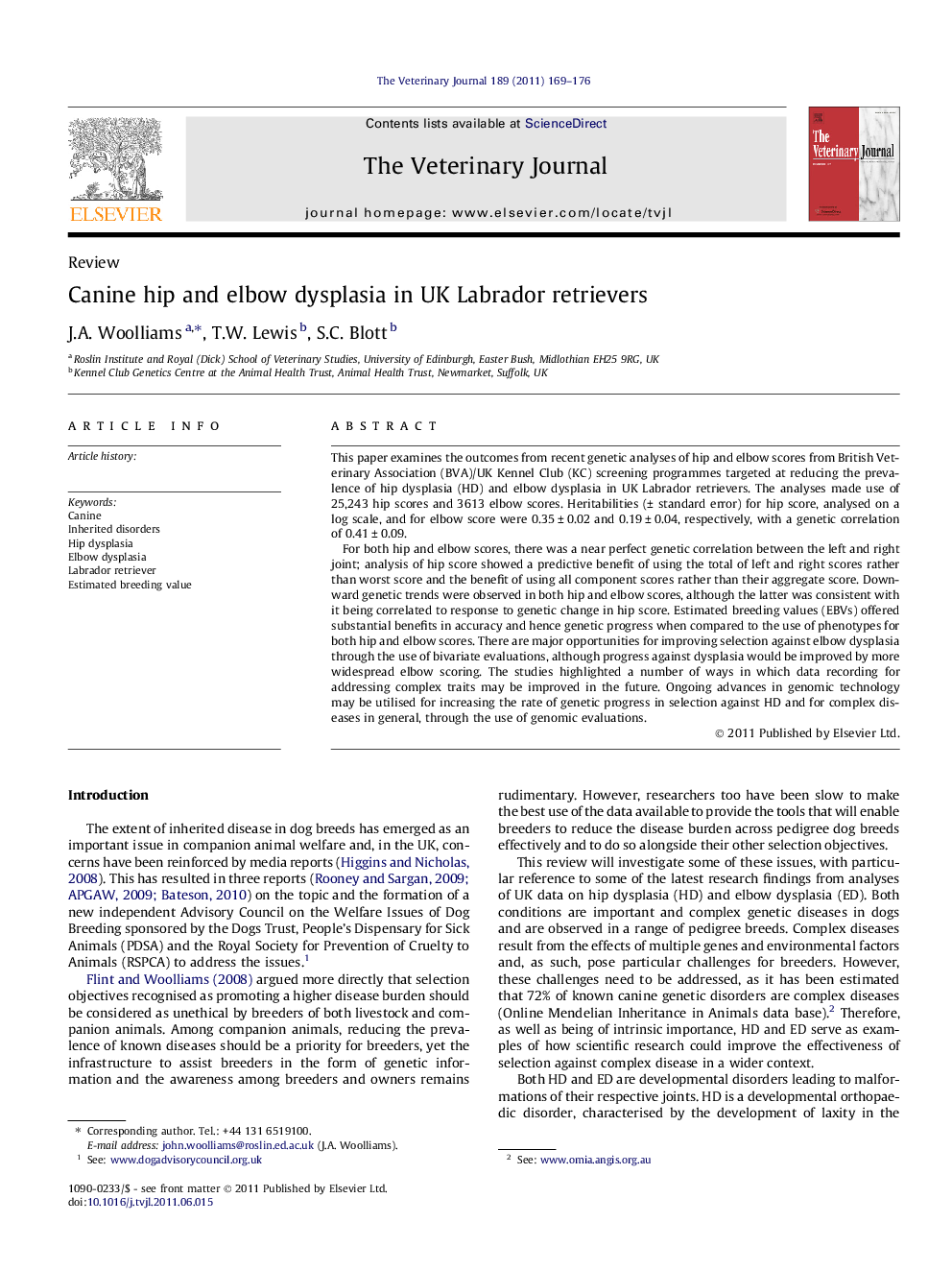| Article ID | Journal | Published Year | Pages | File Type |
|---|---|---|---|---|
| 2464602 | The Veterinary Journal | 2011 | 8 Pages |
This paper examines the outcomes from recent genetic analyses of hip and elbow scores from British Veterinary Association (BVA)/UK Kennel Club (KC) screening programmes targeted at reducing the prevalence of hip dysplasia (HD) and elbow dysplasia in UK Labrador retrievers. The analyses made use of 25,243 hip scores and 3613 elbow scores. Heritabilities (± standard error) for hip score, analysed on a log scale, and for elbow score were 0.35 ± 0.02 and 0.19 ± 0.04, respectively, with a genetic correlation of 0.41 ± 0.09.For both hip and elbow scores, there was a near perfect genetic correlation between the left and right joint; analysis of hip score showed a predictive benefit of using the total of left and right scores rather than worst score and the benefit of using all component scores rather than their aggregate score. Downward genetic trends were observed in both hip and elbow scores, although the latter was consistent with it being correlated to response to genetic change in hip score. Estimated breeding values (EBVs) offered substantial benefits in accuracy and hence genetic progress when compared to the use of phenotypes for both hip and elbow scores. There are major opportunities for improving selection against elbow dysplasia through the use of bivariate evaluations, although progress against dysplasia would be improved by more widespread elbow scoring. The studies highlighted a number of ways in which data recording for addressing complex traits may be improved in the future. Ongoing advances in genomic technology may be utilised for increasing the rate of genetic progress in selection against HD and for complex diseases in general, through the use of genomic evaluations.
